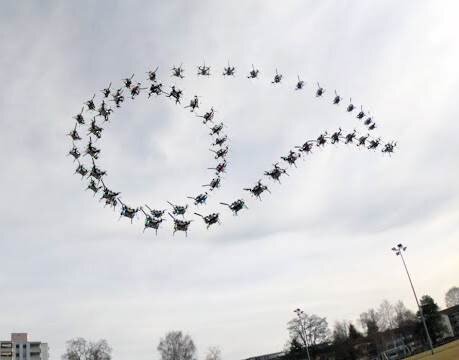 Working together with microprocessor company Intel, a team of researchers at the University of Zurich has now developed a quadrotor helicopter, or quadcopter, that can learn to fly acrobatic maneuvers. While a power loop or a barrel role might not be needed in conventional drone operations, a drone capable of performing such maneuvers is likely to be much more efficient. It can be pushed to its physical limits, make full use of its agility and speed, and cover more distance within its battery life.
Working together with microprocessor company Intel, a team of researchers at the University of Zurich has now developed a quadrotor helicopter, or quadcopter, that can learn to fly acrobatic maneuvers. While a power loop or a barrel role might not be needed in conventional drone operations, a drone capable of performing such maneuvers is likely to be much more efficient. It can be pushed to its physical limits, make full use of its agility and speed, and cover more distance within its battery life. The researchers have developed a navigation algorithm that enables drones to autonomously perform various maneuvers—using nothing more than onboard sensor measurements. To demonstrate the efficiency of their algorithm, the researchers flew maneuvers such as a power loop, a barrel roll or a matty flip, during which the drone is subject to very high thrust and extreme angular acceleration. At the core of the novel algorithm lies an artificial neural network that combines input from the onboard camera and sensors and translates this information directly into control commands. The neural network is trained exclusively through simulated acrobatic maneuvers.
This has several advantages: Maneuvers can easily be simulated through reference trajectories and do not require expensive demonstrations by a human pilot. Training can scale to a large number of diverse maneuvers and does not pose any physical risk to the quadcopter. Only a few hours of simulation training are enough and the quadcopter is ready for use, without requiring additional fine-tuning using real data. The algorithm uses abstraction of the sensory input from the simulations and transfers it to the physical world.
https://techxplore.com/news/2020-06-deep-drone-acrobatics.html

No comments :
Post a Comment